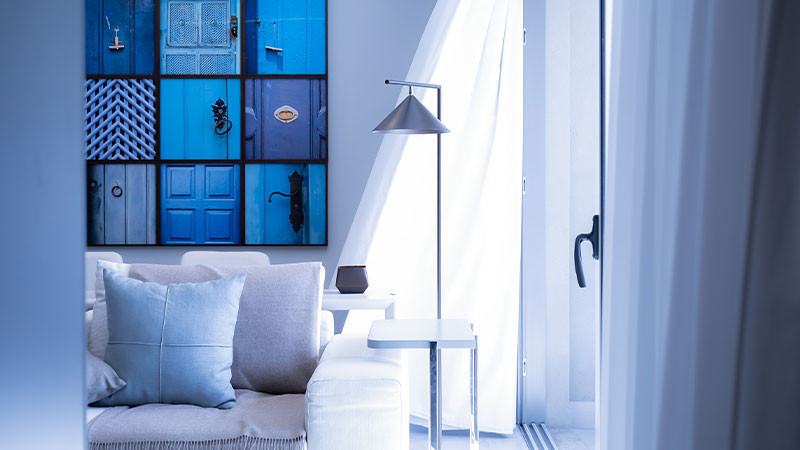
Principles in Choosing Colors for the Interior
Color tone selection the main room of the small room It is best to use white or light-colored walls with less intensity to give the impression that the room is larger than it is If the ceiling is high Use light-colored walls and floors. The dark ceiling will give the impression that the ceiling is lower than the real thing. Make the room not very high, rooms with low ceilings. If the walls are dark or bright colors that are very intense will make you feel the ceiling is low and the floor and ceiling are light-colored will feel that the room is higher.
Choosing the Ceiling
The ceiling is not very low; the room shape is narrow and long. or a very long corridor area, if using hot colors or brightly conspicuous against the wall long end It will help emphasize the feeling of ending and help eliminate the feeling that that room or corridor too long can be the better part of the structure related to weight gain If you use dark, dark colors, it will give you a sense of stability. If used with light-colored walls will see the structural part more prominent and vice versa if using dark walls light-colored structure will see the structure is less pronounced and camouflage to look larger
Choosing a Color Pair
Choosing the best Color Theory to decorate a room is usually preferable to the use of color by choosing a group of color schemes that are close to each other. There is harmony, for example, in the case of choosing a warm color. by using a light base color, including Chicken eggshell color with orange, red, or brown as other decorations such as lotus eyebrows window frame, etc. sometimes You can use contrasting colors or completely contrasting colors to create a highlight, for example using green as a base color against a red highlight.
Or use yellow as a contrasting ground with purple highlights, etc. in the use of different colors. In the room, it must be taken into account that if using multiple colors in the same room should consider Unity of all color schemes in order not to conflict with each other or to divide the way until they are not one and the same examples include If we define the overall color scheme The room is warm tones should also specify the color of other composite materials to be used as a warm tone, lest there was a distinction between the color tones or may use cool materials in some areas to create a highlight. But only a small amount of space is required. In order not to cause segregation of the color scheme
Focus on Best Color Combination
One easy way to control Color Theory weight is to use color to give a group to the general public the largest area is light or less intensely colored. Smaller areas may be added to life by using darker colors. The small area that needs to be emphasized May use darker or more intense colors for eye-catching and interesting
Colors with light absorption, dark colors absorb more light than light colors. (But the exothermic is not different and the color of the material in the daytime with bright sunlight. or in a place that uses electricity from fluorescent lamps be so different In a naturally lit room, for example, there is already a lot of light in the door and window. Avoid using white in a lot of space as it will cause too much reflection. This disturbs the eyes of those who are in the room for a long time and the choice of the color scheme within any space. It should also be adjusted to match the darkness or lightness of the space, such as a relatively dark room. There is a side that has less exposure, if using a dark color group will make the room darker, etc. I hope you learn many new things about this article about color theory in the interior design profession. For further info visit our recommended site which is mentioned in the highlighted link.
